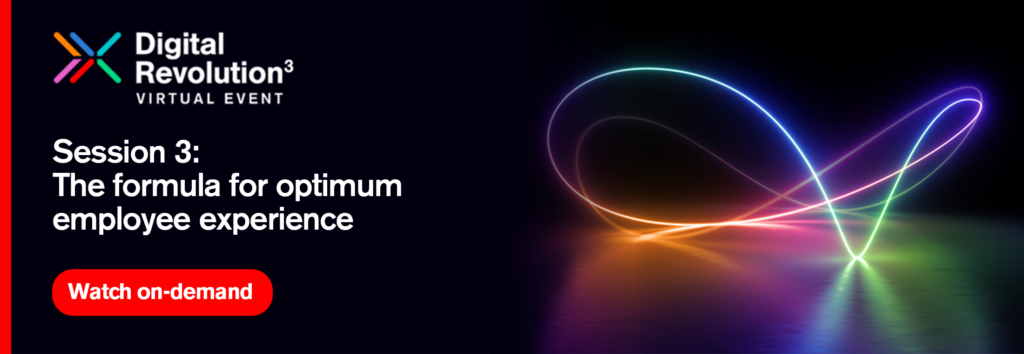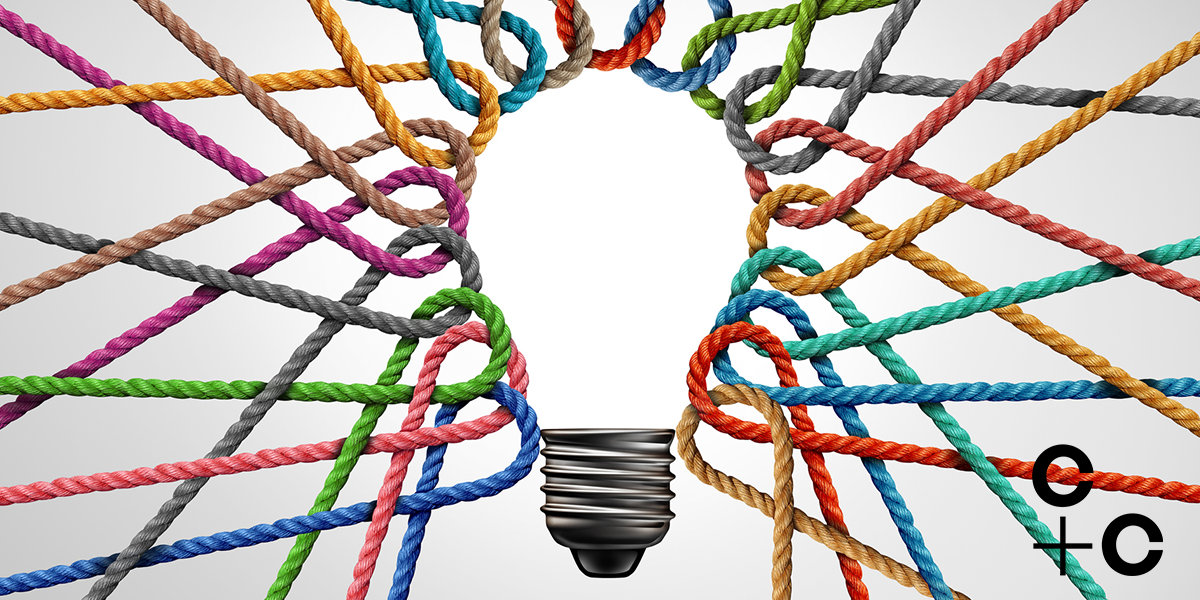
In embracing the digital imperative which organisations around the world face today, technological changes are only one part of the equation – ensuring the technology you choose works for your people is every bit as crucial.
Ahead of his session at our Digital Revolution³ on-demand virtual event, David Francis, Content+Cloud’s Integrated Services Director, explores the challenges many organisations have faced since beginning their digital transformation journeys – together with solutions and tips to achieve the best possible employee experience.
The digital imperative and employee experience
In his address at July’s Microsoft Inspire, Microsoft CEO Satya Nadella neatly condensed the digital imperative into four words: “Do more with less.”
In Satya’s own words, the case for this has never been more urgent, and organisations that don’t take action risk being left behind in a new working world.
But doing more with less certainly doesn’t mean working harder or longer – it’s about applying technology to amplify what you do across your organisation.
Part of amplifying technology means focusing on the tools available to your workforce to improve their employee experience. With work now possible at any time, in any place, employee experience must adapt to match this. Organisations must be digital-first, with an employee experience which connects every employee, facilitates engagement, and improves working relationships between colleagues.
Why is employee experience important?
Employee experience refers to the experience workers have within their companies compared to their expectations. While good experiences will lead to more connected and engaged staff, poor employee experience will create a disconnect between staff, their work, and their employers.
One example of a digital employee experience platform, Microsoft Viva, is now used globally by more than 1,000 organisations.
The happier and more connected your employees, the greater their productivity and efficiency – a relationship illustrated by research from Microsoft and LinkedIn:
- 54% of the global workforce describe themselves as ‘overworked’; 39% as ‘exhausted’.
- 41% of the global workforce are considering leaving their jobs due to burnout or workplace inflexibility.
- 94% of workers stay at companies which invest in their learning and development.
- Employees can boost productivity by up to 14% with properly deployed knowledge-discovery tools.
(Sources: 2021 Work Trend Index, 2019 Workplace Learning Report, Knowledge Sharing in a Changing World)
It’s clear: creating an inviting and appealing employee experience is every bit as significant as the technology you use.
Challenges in employee experience optimisation
For many of our clients, the biggest struggles they face in delivering a great employee experience relate to adoption and management of new technology. Scale and complexity can become a stumbling block for organisations attempting a smooth and widespread adoption.
At various times – especially during the pandemic – organisations may have rolled out evergreen Microsoft 365 services, such as Teams or SharePoint, at speed and without proper forethought and have subsequently struggled to gain the full value of these solutions.
This kind of technical debt – the consequence of hurried technology deployment and prioritising short-term benefits over long-term business value – has a significantly negative impact. When your people use technology which doesn’t suit their needs it results in poor employee experience, which in turn leads to disconnected workers, a deterioration in wellbeing, and a lack of motivation. Dissatisfied staff are likely to look for other opportunities and you risk losing valuable people.
Similarly, piecemeal or siloed implementation, with different departments relying on different solutions, can result in colleagues out of sync with one another.
In simple terms, the tools available to an organisation directly affect its employee experience and the overall viability of its future.
The pace and volume of change in Microsoft 365 also takes many organisations by surprise. An IT leader at one of our clients remarked that they would need a full-time staff member to keep up to date and understand its constantly changing nature. It’s for that reason that at Content Cloud, we provide a specialist service to help organisations navigate these difficulties, called M365 PACE (Proactive Adoption and Change Expertise).
At the heart of this service is something that is central to the digital imperative: the need to consider people and technology together.
How to improve employee experience
There are two fundamentals that organisations should address for a positive employee experience: considering people and technology in tandem, and clearly defining what value means to your organisation.
With hybrid and remote working, the technology we now use is our working environment. As mentioned above, Microsoft Viva is constantly expanding to provide a holistic, digital employee experience platform which workers can access wherever and whenever they need. The digital workplace is now more important than ever, with employees using technology to meet with colleagues, collaborate on projects, and complete tasks.
However, simply adopting new technology doesn’t immediately fix the problem of sub-par experience. Your people will need training and time to understand new systems. Organisations often can’t achieve their goals due to users being uncomfortable with the tools at their disposal, or because of the overall transition to the cloud. Considering your people and their needs at every step is key.
Similarly, I advocate for businesses to regularly answer the question “What does value look like for me and my organisation?”
Digital transition relies on answering this question, and aligning business and IT goals. Defining value helps when designing new services and when working to optimise processes. Each organisation is different, and what ‘good’ means for you will be different to someone else.
These fundamentals coalesce into what we at Content+Cloud describe as the 20/80 rule: we believe that successful business change is 20% about the technology, 80% about people. That’s why working with a specialist partner to ensure your people are at the heart of your transformation is crucial.
Thorough, clear change and adoption management is key. User research is at the forefront of Content+Cloud’s method, studying target users to discover their requirements and to avoid falling into the trap of employing a one-size-fits-all approach.
It’s that 20/80 rule in action – user research gets employees to answer the question: “What’s in it for me?” Discovering what motivates your employees and what they need to work effectively, and visualising which technologies can best be utilised, enables you to compare your current processes against preferred, future behaviour.
Understanding your users’ employee experience
For many businesses there is nothing so overwhelming as shifting to a cloud-first IT model, even for smaller, more agile organisations.
Introducing new ways of working and utilising new technologies can be a complicated undertaking, compounded by the need to monitor the success of your new investment.
Our M365 PACE service gives you tailored dashboards and reports, including usage analytics and productivity score insights, to pinpoint what services users are benefiting most from, and how you can tweak the services available to achieve greater success.
Understanding your users’ reality means you can make the necessary adjustments and updates to provide an optimum employee experience.
Sign up for more insights at our Digital Revolution³ on-demand virtual event
At Digital Revolution³ we will examine in detail what the digital imperative means for you, for us, and for the global workforce as a whole. David Francis, Integrated Services Director, joined by Dan Coleby, Modern Workplace Product Director, and Amy Gordon, Solutions Architect, will take a deeper look at how you can achieve optimum employee experience.



